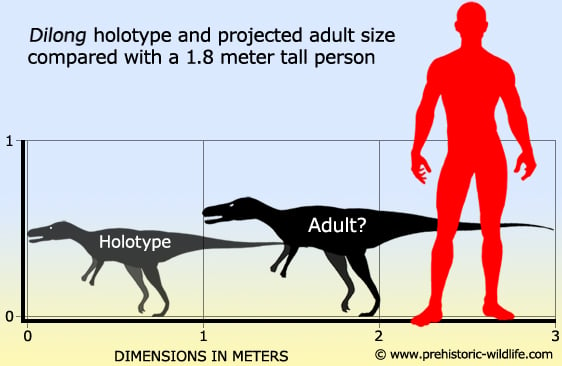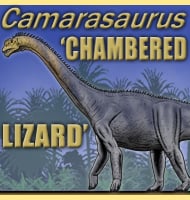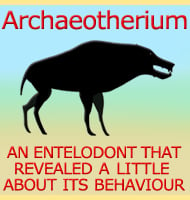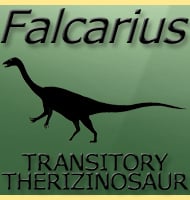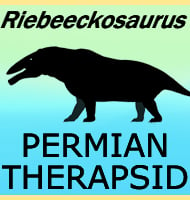In Depth
One thing that made Dilong stand out from other dinosaurs upon its discovery was the impressions of protofeathers. These protofeathers were not capable of enabling flight, but were very good at insulating, keeping heat in the body. A higher base temperature for a cold blooded creature means a faster metabolism and more active life. However, the protofeathers would also allow a warm blooded creature to maintain body temperature for less effort.
Either way, the presence of protofeathers in Dilong indicate that it was an active hunter that relied upon being swift enough to catch prey, probably other and smaller dinosaurs as indicated by its own size. It is also likely that Dilong went for other smaller reptiles such as lizards, as a high metabolism requires a higher calorie intake to maintain. Small dinosaurs in general might not have had to eat a lot, but they may have had to eat often.
The feathers in Dilong also help reinforce the theory of gigantothermy in large dinosaurs. Many of the later and smaller theropods display feathers, Troodon and Velociraptor being good examples. This is because they have small body mass to surface area ratios, meaning that they can lose internal heat quite easily, even if they do not want to. The protofeathers seen in Dilong and others probably evolving for insulation. Skin impressions for larger theropods like Tyrannosaurus, show that they just had bare skin, and this is because the larger dinosaurs had larger body mass to body surface ratios. This means that the internal body parts were already insulated by other body parts, which got insulated again by other tissue layers before heat could reach the skin. Adding feathers on top of that would likely cause the creature to overheat, possibly to the point of illness and even death. There are exceptions to this however with the discovery of Yutyrannus, tyrannosaur known to grow up to nine meters long and yet still have feathers, possibly as a result of living in a colder climate.
When it was described, Dilong was described as a basal member of the tyrannosaurids, and today that classification holds true for most. However because of its features some people consider Dilong to actually be a member of the Coelurosauria.
Further Reading
– Basal tyrannosauroids from China and evidence for protofeathers in tyrannosauroids – Nature 431 (7009): 680–684. – X. Xu, M. A. Norell, X. Kuang, X. Wang, Q. Zhao & C. Jia – 2004.
